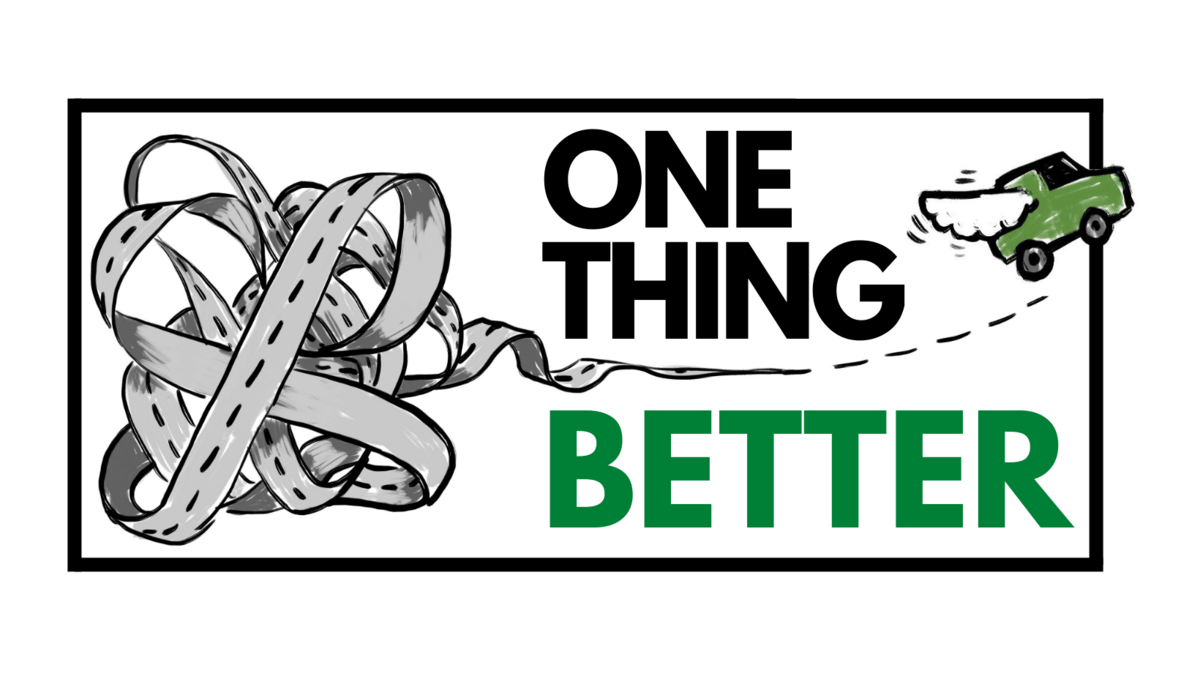- One Thing Better
- Posts
- The Solution to Zoom Happy Hour Hell
The Solution to Zoom Happy Hour Hell
Finally, a better way to bring people together

I just heard a brilliant solution to one of work’s most awkward problems.
The problem is the Zoom happy hour, or anything like it. Have you suffered through one of these? I am sorry for your loss.
But the problem isn’t really the Zoom happy hour. The problem is that, in a remote-work world, companies are struggling to foster connections amongst their teams. How do you connect people — to each other, and to a bigger mission — if aren’t in person?
The solution I heard really got me thinking. I’ll share it in a moment. But first…
An admission: I was once the problem.
In 2021, one of Entrepreneur magazine’s longtime editors took another job.
In the past, when someone would leave the team, we’d all go to a nearby bar for a good send-off. But by 2021, we’d transitioned to a fully remote team and people were far-flung. So I organized a Zoom happy hour.
It was fine. Nice to see everyone. But also, it just felt like another virtual meeting. After a while, enthusiasm petered out and I realized: Unlike at a bar, when people can wander out at will, everyone here felt obligated to stay — until I, the boss, said it’s over. Like a meeting.
I wrapped it up. Then I decided: We’re never doing that again.
Ever since, I’ve wondered how companies can solve this problem. There are lots of ideas. Company retreats. Small, virtual meetings with random colleagues. On and on.
But then, a few weeks ago, I was listening to the a16z Podcast. The horribleness of Zoom happy hours came up…
And I heard an idea that changed everything!
It was on this episode of the show. Three founders were talking about how to adapt to the remote-working world, and one of them, Darren Murph, head of remote at GitHub, brought up the terribleness of Zoom happy hours.
Then he countered with an idea he calls a “community impact outing.” It goes like this:
“You give people an hour of their week to go do something meaningful to them,” Murph says. “Maybe it's volunteer at a food bank, maybe it's reading at a local library. The only thing you ask of them is to wear company swag and take a selfie while they're there. Then they share all of this content back in a public channel.”
Why? Because colleagues will see what each other are doing, and then connect over shared interests.
“For example, I'm an adoptive father,” Murph said. “I might choose to spend my hour working at an orphanage or in the adoption field. When I share that back, if someone else on the team is considering adopting or if they were adopted immediately, we have a connection. Now, there's instant community built. This is real, genuine, authentic relationship in the workplace that you probably won't get out of a Zoom happy hour. So, same hour spent. Much higher impact.”
Why is this is so brilliant?
Sure, it isn’t the most transformative idea in the world. But it is the start of a better mode of thinking.
Here’s the real problem with Zoom happy hours: They are using the tools of the in-person world, and bluntly applying them to the virtual world. I was emailing about this with Steph Smith, the host of the a16z Podcast, and she had a nice way of putting it: “We just skeuomorphic-ly apply what worked IRL,” she wrote.
Yes, exactly! For non-design geeks: Skeuomorphism is when we make a new, derivative object that retains design elements from the original object. For example…
That’s electric lighting designed to look like candles. Or, think about the notes app on the iPhone, with an icon that looks like a notepad.
That’s what the Zoom happy hour is: It’s skeuomorphic.
So, what if we ask this instead: If we were to build something now, based solely on the resources and needs of what we have now, what would it look like?
You wouldn’t build an electric light that looks like a candle, for example. That doesn’t really make sense. So why would we create happy hours for people who are not physically together?
The “community impact outing” concept is a natively designed experience. It’s built off what people have and need now, not what they used to do before.
Here’s what people have: They have their own lives and community.
Here’s what they need: Better individual connections with their remote colleagues.
How do you do that? By using people’s at-home interests to facilitate connections. You prompt personal sharing. You give them meaningful ways to bring a little of their at-home lives into the virtual space.
Our new problems are solvable, but they won’t be solved with our old tools. They’ll be solved with our new ones — and that means we must apply fresh thinking, and be open to fresh solutions.
The 6 Reasons We Fear New Things
While we’re talking about the a16z Podcast…
I was on it this week! It was an absolute blast — I walked through six reasons that people fear new things, illustrated with really fun stories from business and history, and then we talked about solutions to overcome those fears.
Let's Connect!
Like what you read? Subscribe for free and take control of your future.
💌 What do you think? Let me know!
📕 Order my book to future-proof your career!
🎧 Latest podcast: What People of 1923 Predicted About 2023
